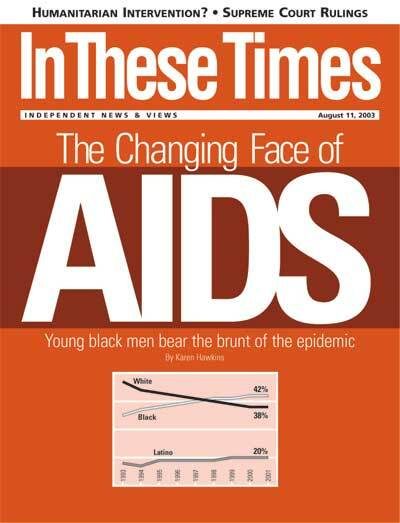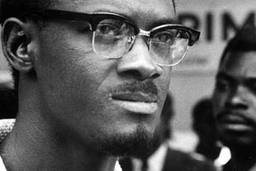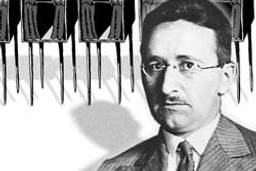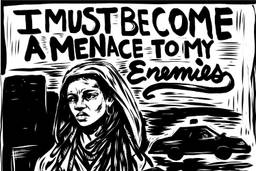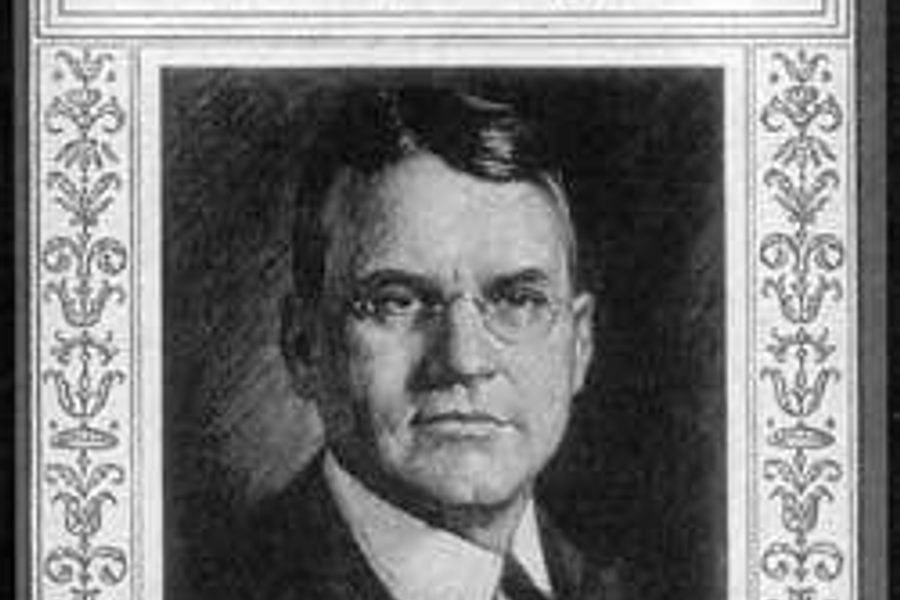
The role of intellectuals and ideas in the project of empire has once again come to the fore. Witness the triumphs of William Kristol, Robert Kagan and others associated with the Project for the New American Century, who in many ways scripted the Iraq war long before it happened. The basic scaffolding of modern empire requires ideas, after all, just as much as it requires violence and treasure.
Thus it is worth consulting Neil Smith’s new book on Isaiah Bowman, American Empire: Roosevelt’s Geographer and the Prelude to Globalization. This volume marks something of a turn for Smith, whose first book, Uneven Development, focused on Marxist geographic theory. His second book, the widely read and perfectly timed New Urban Frontier: Gentrification and the Revanchist City, applied such theory to gentrification in a series of international case studies. In American Empire we get something totally different: a richly detailed, very empirical political biography. (In the interest of full disclosure I should mention that I know Smith fairly well.)
Not often addressed by historians, Isaiah Bowman was in fact an important player in the intellectual entourages of both Woodrow Wilson and FDR. He helped draw up the modern border of Europe, helped shape America’s non-committal policy toward Jewish refugees from Nazism, and ran Johns Hopkins University and the Council of Foreign Relations. In all these capacities, he sought to harness ideas to the larger project of American commercial and political power on a global scale. Smith’s detailed and well-crafted book is simultaneously the story of Bowman, the story of geography as a discipline, and the story of American imperial thinking from World War I to the onset of the Cold War.
————–
Fittingly, Bowman’s tale begins on the land. Born in 1878 and raised on a poor farm in Michigan, Bowman was acutely aware of the enduring frontier character of his natal terrain. By age 19, the bookish farm boy had taken a job as a country schoolteacher. This coincided with America’s “splendid little war” in Cuba and the Philippines. To do his part, Bowman formed a volunteer militia but was never called up. By dint of hard work and study, he soon made his way to Michigan State and from there to Harvard. This bastion of WASP erudition and social power transformed Bowman from a provincial into a real scholar and properly connected elite. At Harvard the young man studied geography, a discipline that was then a quasi-hard science, a stepchild of geology dominated, as Terry Eagleton recently put it, by “maps and chaps.” Bowman’s impact on geography—he later taught it at Yale—was to help steer the discipline toward a more social footing, but it would be many more decades before geography became the highly theoretical, political, and star-studded field we’ve seen in recent years.
As part of his geographical fieldwork, Bowman participated in several South American expeditions mapping and “discovering” places, in particular very high places in Peru. He was part of the famous Machu Picchu expedition of 1911 led by the self-aggrandizing Hiram Bingham, who later became governor of Connecticut and a U.S. senator. The “discovery” of the ancient Inca city was actually a rather simple publicity stunt by rich, white adventurers. Local people had never really “lost” the fabled city; indeed, some Quechua still lived on and around the ruins.
Like the gentlemen geographers he emulated, Bowman was steeped in racism. While on expedition in Peru he once commandeered pack animals, “hijacked” several Quechua porters at gunpoint, and even beat another who was reluctant to work. But this sort of thing, like empire more generally, was justified in Bowman’s worldview by the noble and anesthetizing pursuit of scientific knowledge. It was an intellectualizing escape clause that Bowman would use throughout his life.
In reality, Bowman’s life and thought was progressively less scientific and evermore pragmatically political. As a young man, his interests were by today’s definitions rather geological: He studied with William Morris Davis and was interested in the role of water in creating landscape; his explorations in Peru involved mapping rivers. Later, Bowman became interested in settlement patterns; his assumption was that “the character of the physical features” of the earth “has been a prominent factor in the life of a race.” Bowman believed more or less that space created race, and that the interaction of racial national groups with the physical landscape was the essence of politics. Connected to this notion—which leaned heavily on the German geographer Friedrich Ratzel, who first coined the term Lebensraum—was the idea that politics was about controlling people and territory.
Yet later in life, Bowman would articulate a form of American control that left direct territorial control aside for the sake of economic conquest. So it is fitting that Bowman’s early southern “conquests” took a symbolic form of cartography. He drew maps of territory, seizing it symbolically rather than actually, but helping to open it to external economic and indirect political control all the same. It was this flexible, informal style of governance that was increasingly defining America’s international power in the era when Bowman was at the height of his powers in government.
For Smith this is a key point. “American globalism”—by which he means American capitalist expansion coupled with U.S. military and diplomatic power projection—never duplicated the cumbersome European form of direct territorial control. Save for a few actual colonies like Puerto Rico and the Philippines, the United States has always preferred the low overhead and “plausible denial” offered by an informal, arm’s length empire of client states. The importance of Bowman in all this was that as official geographer No. 1, it was he who most clearly articulated a liberal academic justification for American Lebensraum as economic conquest. The easiest way forward for American elites was to stick to the heart of the matter: capital accumulation and the conquest of markets.
————–
As an expert on settlement patterns, Bowman got his first truly big break when Woodrow Wilson called upon him to join the American delegation to the Paris Peace Conference of 1919. There the American geographer helped lead a massive study, called The Economic and Social History of the World War, better known simply as the “Inquiry,” whose whole purpose was to formulate the basis of a “scientific peace.” Toward that end Bowman created “scientific” yet rather generous borders for Poland, which—along with being based on much closer study of economic, cultural, and topographical regions—created a healthy bulwark against the young Bolshevik state to the east. In Paris Bowman was also instrumental in building closer ties between the U.S. and U.K. delegations. After the war, these links deepened, and as head of the newly created Council of Foreign Relations (CFR) one of Bowman’s many projects was to cement postwar Anglo-American cooperation. In many ways this development augured the passing of the baton of global hegemony across the Atlantic from England to America.
Under Bowman’s lead, the CFR became a hothouse of American imperial imagination and a “contact bazaar.” By the 1970s the CFR was dismissed by conservatives as too liberal, but during Bowman’s tenure the CFR was a virtual private adjunct to the State Department. Every secretary of state who held office between 1921 and 1944 made speeches of “historic significance” before the CFR, and many of its members graduated from its private and highly secretive seminars into direct government service. It was around this time in 1935 that Bowman also became president of John Hopkins University, a post he would hold until 1948.
Smith describes this period of Bowman’s career as marked by forward thinking liberalism. By today’s bellicose Rumsfeldian standards, Bowman and the rest of his ilk were downright sissies: They believed in diplomacy, and for a while even had a modus vivendi with the Soviet Union. Bowman even expressed an amoral, technocratic concern about the disruptive impacts of U.S. foreign investment in Latin America. But in some ways, this phase in his thought strikes one as simple Realpolitik in the face of socialism and a faltering global economy. He was, in short, a careful international planner, but his guiding vision was still U.S. economic domination—not as colonial ruler but as “resource trustee,” guarding the wealth and development of the tropics.
Bowman’s moment of greatest political influence was also his absolute moral nadir. Like most WASPs, Bowman at first greeted Hitler as a “windbag” but one that might actually be useful in putting down the red tide of socialism. Bowman even rejoiced during the 1942 Nazi counter-offensive, when Operation Barbarossa looked like it would take down the Soviet Union by liquidating millions of Russians. But all this became truly deranged when Bowman was put in charge of “Project M,” in which the question of Jewish refugee resettlement was to be “scientifically” managed. Again Bowman was tapped because of his expertise on settlement patterns and “frontier belts.” But nothing useful or concrete ever came of Bowman’s reams of data and maps, much of which remained classified until 1960.
In the face of clear Nazi genocide, Bowman, like many other beltway elites, twiddled his thumbs while the Jews were slaughtered. In this regard Bowman hid behind the academic pettifogging of “Project M”: Refugee settlement required lots of planning, thin population distribution, lots of capital and suitable rural or frontier zones to absorb the deracinated populations. Instead of urging Roosevelt to absorb refugees from Nazi terror, Bowman suggested elaborate, expensive, developmentalist policies that sought to link refugee flows to the needs of capital by settling out-of-the-way areas like rural Venezuela or Argentina.
Behind Bowman’s studied lack of concern for the victims of Nazism was a deep-seated anti-Semitism. It seems he felt threatened by Jews, or at least by too many of them in one urban place where they might exert influence on the levers of capital and political power. As for the creation of a Jewish state, Bowman opposed the idea as it was developing in Palestine, not so much out of anti-Semitism but rather because he feared the Zionist project would require massive America subsidies and military support (which indeed it did, and does). Ultimately, Bowman’s work on “Project M” calls to question the whole political edifice of scholarly detachment and the moral compartmentalization it promulgates.
————–
For Smith, the guiding thread in Bowman’s work was that he “envisaged a global supervisory role for the United States.” At the end of World War II, this was best advanced through an American-dominated United Nations, which would create a diplomatic check on Soviet power and structure the inevitable decolonization movements on the horizon. But this effort turned out to be something of a failure, at least from an imperialist point of view, because the United Nations always had too much autonomy and too many states, and was not an effective enough tool of the United States. While this is true, Smith may go too far when he says the United Nations “frustrated” American global ambition. In the Cold War, America never ruled just as it pleased, but neither was it denied a role as the leading global power, from the Bretton Woods financial framework to nuclear proliferation to the crushing of Third World insurgencies in Guatemala and Iran.
At home Bowman embraced the Cold War with red-phobic zeal, denouncing Marxism in the universities and turning harshly on the Soviet Union, which he saw as the only real check on American power. Ultimately, Bowman was both a visionary who provided academic services and imperial imagination to American rulers and a craven egghead who wasted vast sums of government wealth on unread and unused geographical studies.
But what strikes one most is Bowman’s opportunism: He was to the right of Roosevelt but subtly changed positions so as to always be in favor. He spent his life in the cloistered comfort of Ivy League universities and the inner sanctums of the executive branch. He was a stone-cold racist and anti-Semite who let Jews burn and talked of brown people in the global south as “smaller peoples” in need of control and guidance. One of his last acts of accommodation just before his retirement and early death was to passively allow a Hopkins colleague and social acquaintance, Owen Lattimore, to be red-baited by McCarthy and driven out of a job. It was the perfect, politely brutal end to Bowman’s career, which is to say his life.
Thus it is worth consulting Neil Smith’s new book on Isaiah Bowman, American Empire: Roosevelt’s Geographer and the Prelude to Globalization. This volume marks something of a turn for Smith, whose first book, Uneven Development, focused on Marxist geographic theory. His second book, the widely read and perfectly timed New Urban Frontier: Gentrification and the Revanchist City, applied such theory to gentrification in a series of international case studies. In American Empire we get something totally different: a richly detailed, very empirical political biography. (In the interest of full disclosure I should mention that I know Smith fairly well.)
Not often addressed by historians, Isaiah Bowman was in fact an important player in the intellectual entourages of both Woodrow Wilson and FDR. He helped draw up the modern border of Europe, helped shape America’s non-committal policy toward Jewish refugees from Nazism, and ran Johns Hopkins University and the Council of Foreign Relations. In all these capacities, he sought to harness ideas to the larger project of American commercial and political power on a global scale. Smith’s detailed and well-crafted book is simultaneously the story of Bowman, the story of geography as a discipline, and the story of American imperial thinking from World War I to the onset of the Cold War.
————–
Fittingly, Bowman’s tale begins on the land. Born in 1878 and raised on a poor farm in Michigan, Bowman was acutely aware of the enduring frontier character of his natal terrain. By age 19, the bookish farm boy had taken a job as a country schoolteacher. This coincided with America’s “splendid little war” in Cuba and the Philippines. To do his part, Bowman formed a volunteer militia but was never called up. By dint of hard work and study, he soon made his way to Michigan State and from there to Harvard. This bastion of WASP erudition and social power transformed Bowman from a provincial into a real scholar and properly connected elite. At Harvard the young man studied geography, a discipline that was then a quasi-hard science, a stepchild of geology dominated, as Terry Eagleton recently put it, by “maps and chaps.” Bowman’s impact on geography—he later taught it at Yale—was to help steer the discipline toward a more social footing, but it would be many more decades before geography became the highly theoretical, political, and star-studded field we’ve seen in recent years.
As part of his geographical fieldwork, Bowman participated in several South American expeditions mapping and “discovering” places, in particular very high places in Peru. He was part of the famous Machu Picchu expedition of 1911 led by the self-aggrandizing Hiram Bingham, who later became governor of Connecticut and a U.S. senator. The “discovery” of the ancient Inca city was actually a rather simple publicity stunt by rich, white adventurers. Local people had never really “lost” the fabled city; indeed, some Quechua still lived on and around the ruins.
Like the gentlemen geographers he emulated, Bowman was steeped in racism. While on expedition in Peru he once commandeered pack animals, “hijacked” several Quechua porters at gunpoint, and even beat another who was reluctant to work. But this sort of thing, like empire more generally, was justified in Bowman’s worldview by the noble and anesthetizing pursuit of scientific knowledge. It was an intellectualizing escape clause that Bowman would use throughout his life.
In reality, Bowman’s life and thought was progressively less scientific and evermore pragmatically political. As a young man, his interests were by today’s definitions rather geological: He studied with William Morris Davis and was interested in the role of water in creating landscape; his explorations in Peru involved mapping rivers. Later, Bowman became interested in settlement patterns; his assumption was that “the character of the physical features” of the earth “has been a prominent factor in the life of a race.” Bowman believed more or less that space created race, and that the interaction of racial national groups with the physical landscape was the essence of politics. Connected to this notion—which leaned heavily on the German geographer Friedrich Ratzel, who first coined the term Lebensraum—was the idea that politics was about controlling people and territory.
Yet later in life, Bowman would articulate a form of American control that left direct territorial control aside for the sake of economic conquest. So it is fitting that Bowman’s early southern “conquests” took a symbolic form of cartography. He drew maps of territory, seizing it symbolically rather than actually, but helping to open it to external economic and indirect political control all the same. It was this flexible, informal style of governance that was increasingly defining America’s international power in the era when Bowman was at the height of his powers in government.
For Smith this is a key point. “American globalism”—by which he means American capitalist expansion coupled with U.S. military and diplomatic power projection—never duplicated the cumbersome European form of direct territorial control. Save for a few actual colonies like Puerto Rico and the Philippines, the United States has always preferred the low overhead and “plausible denial” offered by an informal, arm’s length empire of client states. The importance of Bowman in all this was that as official geographer No. 1, it was he who most clearly articulated a liberal academic justification for American Lebensraum as economic conquest. The easiest way forward for American elites was to stick to the heart of the matter: capital accumulation and the conquest of markets.
————–
As an expert on settlement patterns, Bowman got his first truly big break when Woodrow Wilson called upon him to join the American delegation to the Paris Peace Conference of 1919. There the American geographer helped lead a massive study, called The Economic and Social History of the World War, better known simply as the “Inquiry,” whose whole purpose was to formulate the basis of a “scientific peace.” Toward that end Bowman created “scientific” yet rather generous borders for Poland, which—along with being based on much closer study of economic, cultural, and topographical regions—created a healthy bulwark against the young Bolshevik state to the east. In Paris Bowman was also instrumental in building closer ties between the U.S. and U.K. delegations. After the war, these links deepened, and as head of the newly created Council of Foreign Relations (CFR) one of Bowman’s many projects was to cement postwar Anglo-American cooperation. In many ways this development augured the passing of the baton of global hegemony across the Atlantic from England to America.
Under Bowman’s lead, the CFR became a hothouse of American imperial imagination and a “contact bazaar.” By the 1970s the CFR was dismissed by conservatives as too liberal, but during Bowman’s tenure the CFR was a virtual private adjunct to the State Department. Every secretary of state who held office between 1921 and 1944 made speeches of “historic significance” before the CFR, and many of its members graduated from its private and highly secretive seminars into direct government service. It was around this time in 1935 that Bowman also became president of John Hopkins University, a post he would hold until 1948.
Smith describes this period of Bowman’s career as marked by forward thinking liberalism. By today’s bellicose Rumsfeldian standards, Bowman and the rest of his ilk were downright sissies: They believed in diplomacy, and for a while even had a modus vivendi with the Soviet Union. Bowman even expressed an amoral, technocratic concern about the disruptive impacts of U.S. foreign investment in Latin America. But in some ways, this phase in his thought strikes one as simple Realpolitik in the face of socialism and a faltering global economy. He was, in short, a careful international planner, but his guiding vision was still U.S. economic domination—not as colonial ruler but as “resource trustee,” guarding the wealth and development of the tropics.
Bowman’s moment of greatest political influence was also his absolute moral nadir. Like most WASPs, Bowman at first greeted Hitler as a “windbag” but one that might actually be useful in putting down the red tide of socialism. Bowman even rejoiced during the 1942 Nazi counter-offensive, when Operation Barbarossa looked like it would take down the Soviet Union by liquidating millions of Russians. But all this became truly deranged when Bowman was put in charge of “Project M,” in which the question of Jewish refugee resettlement was to be “scientifically” managed. Again Bowman was tapped because of his expertise on settlement patterns and “frontier belts.” But nothing useful or concrete ever came of Bowman’s reams of data and maps, much of which remained classified until 1960.
In the face of clear Nazi genocide, Bowman, like many other beltway elites, twiddled his thumbs while the Jews were slaughtered. In this regard Bowman hid behind the academic pettifogging of “Project M”: Refugee settlement required lots of planning, thin population distribution, lots of capital and suitable rural or frontier zones to absorb the deracinated populations. Instead of urging Roosevelt to absorb refugees from Nazi terror, Bowman suggested elaborate, expensive, developmentalist policies that sought to link refugee flows to the needs of capital by settling out-of-the-way areas like rural Venezuela or Argentina.
Behind Bowman’s studied lack of concern for the victims of Nazism was a deep-seated anti-Semitism. It seems he felt threatened by Jews, or at least by too many of them in one urban place where they might exert influence on the levers of capital and political power. As for the creation of a Jewish state, Bowman opposed the idea as it was developing in Palestine, not so much out of anti-Semitism but rather because he feared the Zionist project would require massive America subsidies and military support (which indeed it did, and does). Ultimately, Bowman’s work on “Project M” calls to question the whole political edifice of scholarly detachment and the moral compartmentalization it promulgates.
————–
For Smith, the guiding thread in Bowman’s work was that he “envisaged a global supervisory role for the United States.” At the end of World War II, this was best advanced through an American-dominated United Nations, which would create a diplomatic check on Soviet power and structure the inevitable decolonization movements on the horizon. But this effort turned out to be something of a failure, at least from an imperialist point of view, because the United Nations always had too much autonomy and too many states, and was not an effective enough tool of the United States. While this is true, Smith may go too far when he says the United Nations “frustrated” American global ambition. In the Cold War, America never ruled just as it pleased, but neither was it denied a role as the leading global power, from the Bretton Woods financial framework to nuclear proliferation to the crushing of Third World insurgencies in Guatemala and Iran.
At home Bowman embraced the Cold War with red-phobic zeal, denouncing Marxism in the universities and turning harshly on the Soviet Union, which he saw as the only real check on American power. Ultimately, Bowman was both a visionary who provided academic services and imperial imagination to American rulers and a craven egghead who wasted vast sums of government wealth on unread and unused geographical studies.
But what strikes one most is Bowman’s opportunism: He was to the right of Roosevelt but subtly changed positions so as to always be in favor. He spent his life in the cloistered comfort of Ivy League universities and the inner sanctums of the executive branch. He was a stone-cold racist and anti-Semite who let Jews burn and talked of brown people in the global south as “smaller peoples” in need of control and guidance. One of his last acts of accommodation just before his retirement and early death was to passively allow a Hopkins colleague and social acquaintance, Owen Lattimore, to be red-baited by McCarthy and driven out of a job. It was the perfect, politely brutal end to Bowman’s career, which is to say his life.
Christian Parenti is an American investigative journalist and author. His books include: Lockdown America: Police and Prisons in the Age of Crisis (2000), a survey of the rise of the prison industrial complex from the Nixon through Reagan eras and into the present; The Soft Cage: Surveillance in America From Slavery to the War on Terror (2003), a study of surveillance and control in modern society; and The Freedom: Shadows and Hallucinations in Occupied Iraq (2004), an account of the U.S. occupation in Iraq. Parenti has also reported from Afghanistan, Iraq, Venezuela, and Bolivia.
